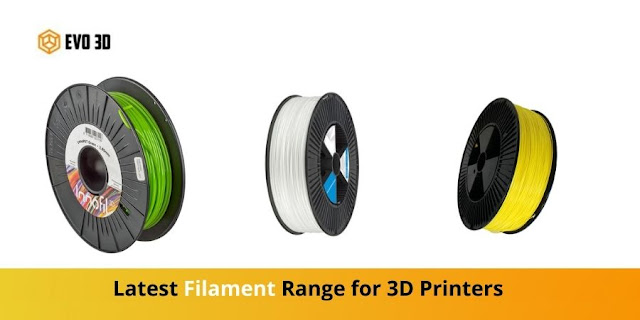This Filament Range for 3D Printers will be Used Most in 2022
Have you purchased an FDM 3D printer recently? If that’s the case, you have already unlocked a whole new path to exciting projects that will bring your imagination to life. All you need now are the right materials to get you started on that path.
Known as 3D printer filaments, these will simply be melted by the printer to form the shapes and flesh out the designs of your choice. There is a wide variety of options available these days, each with its own unique qualities and characteristics that will affect the final model your printer creates. So how do you know which one’s right for your requirements?
Major Categories of Filament for 3D Printers
Knowing what each material brings to the table is important, so here’s a glance at a filament for 3D printers list that includes the top picks for 2022.
Before that, consider the two major variants of 3D printer filaments according to size:
● 1.75mm: This is the most well-used variant due to its comparatively smaller diameter which makes it more versatile.
● 2.85mm: Also known as 3mm, this type of filament for 3D printers is gradually decreasing in both use and popularity. However, it may still be in use by a few large build volume 3D printer types.
It is rather difficult to decide which filament is the best in 3D printing today because of the variety of applications they go through. This decision also depends on the experience level of the user.
For instance, newcomers to the world of 3D printing can get the best start with ABS or PLA filaments, especially because PLA is extremely convenient to use compared to the rest of the types available these days. Another useful and relatively easy-to-use material is PETG (Polyethylene Terephthalate with added Glycol).
That said, you may have to consider the costs associated with purchasing filaments and how much you will actually need. Again, PLA and ABS are the most affordable options for small as well as industrial FDM printer ranges. PETG is a bit costlier but brings more durability in exchange for the higher price.
Materials that offer greater strength, heat resistance and other useful features tend to get more expensive. For instance, nylon is costlier than PETG, and PEEK is perhaps one of the priciest materials, due to both their advantages and availability.
Know More About Each Popular Filament for 3D Printers
Given below are the five most well-known and commonly-used filaments for 3D printers. Take a look:
1. PLA (Polylactic Acid) - Polylactic Acid has consumers in the millions across the globe. That’s because it is highly versatile and can help build strong enough 3D models of many kinds. Moreover, it is extremely economical and at present, is the only biodegradable filament. It is manufactured from crops such as corn starch, giving it the advantage of odourless 3D printing, unlike ABS, which releases foul odour and possibly toxic fumes.
2. ABS (Acrylonitrile Butadiene Styrene) - This material is preferred by some hobbyists due to the mechanical properties it contains. Not only is it tough, but as a filament for 3D printers, it also offers impressive durability and impact resistance. Similar to PLA, it finds its use in multiple applications and is cheap, making it suitable for rapid prototyping.
3. PETG (Polyethylene Terephthalate with added Glycol) - It has the advantage of excellent layer adhesion along with solid impact resistance and amazing thermal properties. That said, it doesn’t come with some of the issues that PLA or ABS face, such as brittleness or warping respectively. This is why many users have started to consider PETG as one of the best options alongside ABS and PLA.
4. TPE (Thermoplastic Elastomers) - This is a blend of plastics and rubber to lend formidable flexibility to the finished model. For this reason, this filament for 3D printers is extremely well-suited for 3D printing items with elasticity, such as rubber bands, car tires, and products required in the fashion industry.
5. Nylon - Being a polyamide, it has the reputation of having incredible strength as well as resistance to heat, scratches, wears, and impact. For these reasons, it finds its major use in rapid prototyping and industrial printing to name a few.





Comments
Post a Comment